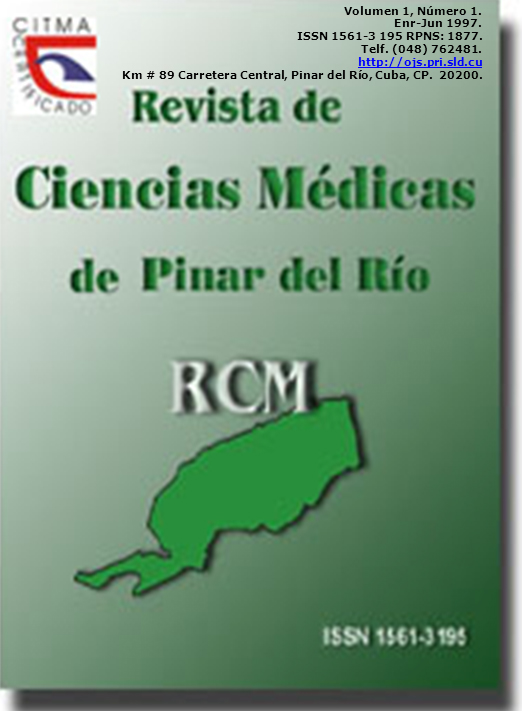Factores de riesgo y evolución de las gestantes con preeclampsia grave. Risk factors and evolution of pregnant women with severe pre-eclampsia
Abstract
Con el objetivo de conocer los factores de riesgo y la evolución de las gestantes con preclampsia grave, se realizo un estudio retrospectivo en 150 embarazadas portadoras de la entidad ingresadas en el Hospital Docente Gineco-Obstétrico Justo Legón Padilla de Pinar del Río de Marzo 1993 a Febrero l994. Se estudiaron variables: edad materna, paridad, modo de terminación del embarazo, vía de nacimiento, causas de cesárea peso y Apgar del recién nacido y la morbi-mortalidad perinatal y materna. Se seleccionaron 200 gestantes sin hipertensión como grupo control y se utilizo porcentaje, chi cuadrado prueba de proporciones para grupos independientes y Odds Ratio con un nivel de significación de p<05. Fueron factores de riesgo la adolescencia y la nuliparidad (OR=2.7 y 1.2 respectivamente, la cesárea se realizo en el 68% y estuvo relacionada con el parto inducido (P <0,001) y las causas mas frecuentes: electiva (50,5%), inducción fallida (9,9%) y el sufrimiento fetal agudo (5,8%); la hipoxia neonatal se relaciono con el parto pretérmino y la cesárea urgente (P< 0,001). Hubo 5 muertes fetales tardías y 2 neonatales precoces, no hubo muertes maternas y la morbilidad mas frecuente de estas: coagulación intravascular diseminada, la sepsis puerperal y el síndrome de Hellp.
DeCS: HIPERTENSION/epidemeologia; TOXEMIAS DEL EMBARAZO; CESÁREA/morbilidad.
Downloads
How to Cite
Issue
Section
License
Authors who have publications with this journal agree to the following terms: Authors will retain their copyrights and grant the journal the right of first publication of their work, which will be publication of their work, which will be simultaneously subject to the Creative Commons Attribution License (CC-BY-NC 4.0) that allows third parties to share the work as long as its author and first publication in this journal are indicated.
Authors may adopt other non-exclusive license agreements for distribution of the published version of the work (e.g.: deposit it in an institutional telematic archive or publish it in a volume). Likewise, and according to the recommendations of the Medical Sciences Editorial (ECIMED), authors must declare in each article their contribution according to the CRediT taxonomy (contributor roles). This taxonomy includes 14 roles, which can be used to represent the tasks typically performed by contributors in scientific academic production. It should be consulted in monograph) whenever initial publication in this journal is indicated. Authors are allowed and encouraged to disseminate their work through the Internet (e.g., in institutional telematic archives or on their web page) before and during the submission process, which may produce interesting exchanges and increase citations of the published work. (See The effect of open access). https://casrai.org/credit/



